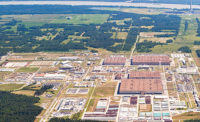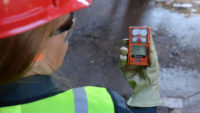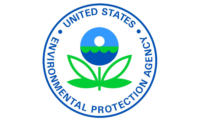On December 29, 1998, everything changed for four-year-old Jarrett McElheney.
The toddler lived with his parents at the Oakwood Mobile Home Park, in Athens, Georgia, across the street from Southeast Terminals, a tank farm for storage of petroleum products. When he showed signs of illness and sluggishness, his parents brought him to a pediatrician, who reported that his blood chemistry indicated leukemia.1
The physician noted that another toddler had contracted the disease and resided at an address very near to Jarret McElheney. Jarret’s parents filed a lawsuit against the Southeast Terminals’ owners and during the proceedings the mobile home site was tested for benzene, a volatile liquid hydrocarbon present in coal tar and petroleum, known to be carcinogenic.
Lawyers on both sides debated the results. The lawsuit was eventually settled for an undisclosed amount, out of court. The family’s pursuit of justice prevailed and fortunately for Jarret, his leukemia went into remission after treatment.
The incident demonstrates the growing public health concerns of benzene and the priority that regulators are giving to mandatory monitoring of the carcinogen near industrial facilities. Incidents such as this, however, also spotlight the utility of continuous fence line gas monitoring, as processing plant owners are faced with increased regulatory challenges.
The expectation of citizens like the McElheney family is that facility owners must be more responsible, and regulators need to step in – particularly at processing plants where ambient benzene is prevalent at the fence line.
Mandatory benzene monitoring?
Exposure limits are changing. Benzene exposure limits set by OSHA have already tightened from past years and are likely to tighten further. In June 2014, California lowered its limit of long-term exposure level for benzene from 20 ppb to 1 ppb.2 With increased monitoring requirements, companies need to deploy technology they and their constituents can rely upon.
At present, the U.S. EPA (Environmental Protection Agency) is proposing mandatory monitoring for the presence of benzene at chemical processing plants with equipment and systems that pose such risk.3 The agency proposes a requirement for passive sampling at various increments along the peripheral boundary, or fence line, of a processing facility. This would apply to facilities with equipment where benzene exposure is likely. The number of sampling points depends on the shape and overall size of the property, and extra sampling locations would be required where a benzene emission source is closer to the fence line. Each sample would require 14 days of exposure to ambient air.
The samples required by the EPA would utilize tube sampling. These require a small tube filled with an adsorbent material and a cover with small apertures to allow ambient air in at a fixed rate. This method is currently utilized by the European Union for benzene monitoring. The EPA believes this sampling method is the most effective technique to monitor benzene concentrations that could adversely impact the surrounding environs and communities outside processing facilities. The agency is basing this on a year-long monitoring program at the Foothills West Refinery in Corpus Christi, Texas, in 2009. The agency is driven to implement these regulations by the incidence of leukemia reported as inflicting those working or living near chemical processing plants in the presence of benzene. It stands to ensure the safety of those who reside outside the facility, as well as workers who are closest to it and who also are at risk.
The risk of reputation lost can be costly for a corporation. One energy company paid dearly in the largest offshore oil spill in the history of the petroleum industry. It spent nearly $50 million to help with the economic recovery of the Gulf of Mexico region as retribution. It also sought to project social responsibility4 and subsequently spent $23 billion on the Gulf of Mexico cleanup and to cover claims5 relating to the disaster.6
Challenge meets opportunity
Worker exposure to benzene, and the fence line of the facility, is ideally monitored by continuous wireless gas detection technology. It tracks exposure, in real-time, and automatically logs data. This subsequently serves as an audit trail for discovery when latent lawsuits arrive, years after a worker retires. Without wireless technology for monitoring harmful substances, companies risk more than they realize: community challenge, fines, worker downtime, stakeholder mistrust, and their reputation.
Chemical processing plants are gearing up for the ramifications of the proposed requirement for benzene. Wireless monitoring is the key to staying in compliance as well as ensuring safety for the surrounding community, and as a result of the proposed EPA regulations, there has been a flood of interest.
Wireless technology requires a mix of skill sets to use, and it is somewhat of a paradigm shift away from hardwired monitoring and on-site monitoring with handheld devices. At present, many facilities understand the value of using wireless gas detection technology. It has become one of the most valuable ways to protect workers, the community, and to meet regulatory requirements. Accommodating the need to align with regulatory compliance is not a one-size-fits-all proposition. Processing plants have irregular perimeters, different surroundings, sizes, and geographies. Wireless gas detection systems are easily configurable to fit the dimensions of the plant, provide redundant backup and system re-routing, and wireless alarms and man-down information in the event of an incident.
Some organizations capitalize on wireless gas-monitoring technology to detect dangerous gases at the fence line when circumstances dictate. For example, Western Refining in El Paso, Texas, recently installed fence line monitoring to monitor for lower explosive limit (LEL) of explosive gasses. As a large facility with a great deal of linear periphery, they have an added challenge: a major highway that passes through the center of the site.
Western Refining must monitor gases to ensure they do not cross the highway, which could be hazardous because combustible gas could encounter hot automotive engines on the highway that runs through the site and initiate an explosion. Wireless fence line monitoring mitigates this risk.
Quantifying the benefits
Wireless monitoring provides value not always seen at first glance. The total costs of installation and maintenance must also be considered. When they are, value becomes much more apparent.
OSHA states it perfectly: businesses spend $170 billion a year as a result of occupational injuries and illnesses. Their bottom-line profit pays for this. Established safety and health management systems pay off by reducing such costs by 20 to 40 percent.7 This is precisely where a wireless system plays a big role.
In addition to cost savings and reliability, a wireless system allows flexibility in monitoring harmful substances. A wireless pick-up point may be moved to focus on a suspect area, where a hardwired system would not allow it. This is key for benzene detection because its source is not always definitive. Wireless is flexible and provides more control – at a time when regulators are about to make sure you have such control.
“Safe environments improve employee morale, which often leads to increased productivity and better service,” OSHA states in online data and studies about the value that a worker safety program produces. “Lost productivity from injuries and illnesses costs companies $60 billion each year.”8
Wireless fence line monitoring can help plants meet imminent EPA regulations, improve their facility’s safety record, and keep workers and community citizens safe and alive through real-time monitoring of the levels of hazardous gases and substances in and around the facility. This technology leads to increased productivity and better service.
Footnotes
1 Kristen Lombardi, The Guardian, http://www.theguardian.com/environment/2014/dec/08/benzene-link-leukemia-children. 8 December, 2014
2 Kristen Lombardi, The Guardian, http://www.theguardian.com/environment/2014/dec/08/benzene-link-leukemia-children. 8 December, 2014
3 http://www.all4inc.com/us-epa-proposes-benzene-fenceline-monitoring-for-refineries-amongst-other-mact-and-nsps-changes
4 Victoria Taylor, Forbes: “Oil Companies Back Slick Ad Campaigns.” 28 June 2012.
5 BP television commercial that aired 26 August 2012.
6 Campbell Robertson and Clifford Krauss, New York Times: "Gulf Spill Is the Largest of Its Kind, Scientists Say." 02 Aug 2010.
7 https://www.osha.gov/Publications/safety-health-addvalue.html
8 https://www.osha.gov/Publications/safety-health-addvalue.html



